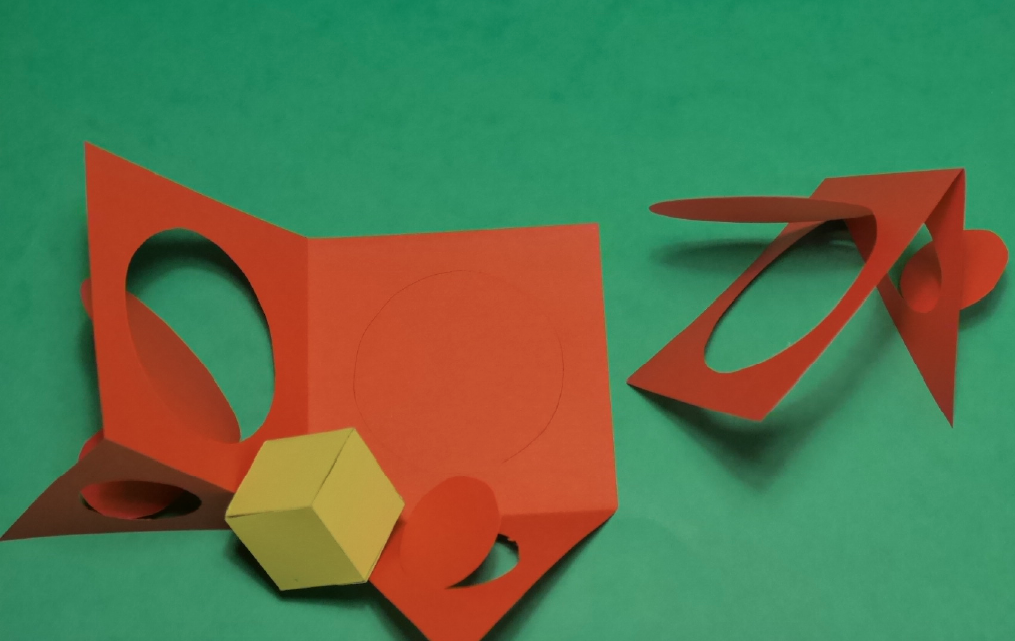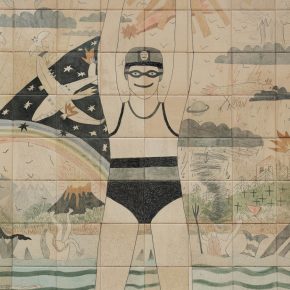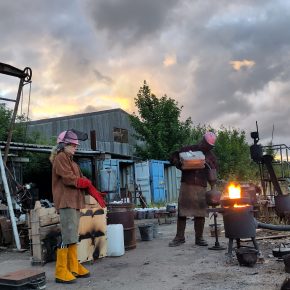Ceramic Sculpture Bursary Cohort
Edinburgh Sculpture Workshop is excited to announce that Donata Kiaunytė, Khadea Kuchenmeister and Paul McAuley are the three artists that have been selected for our new Ceramic Sculpture Bursary Programme
Led by Ceramic artist and Studio Holder Charlotte Barker, the Ceramic Sculpture Bursaries have been set up to support a cohort of artists in the development of their their skills in ceramic material processes and techniques, to enable them to push the boundaries of their individual practices and the potential of contemporary ceramics.
The artists have been selected by Studio Holders Charlotte Barker, Kjersti Sletteland and ESW team members Debi Banerjee and Ash Lim.
Artist and Technician Ash Lim will also join the cohort over the 16 week programme.
The cohort started working together virtually this month and will begin to access the facilities at ESW when it is feasible within the pandemic conditions.
Donata Kiaunytė
Kiaunytė was born in Lithuania and graduated from ECA with BA (Hons) of Fine Arts (Sculpture) in 2013. Since then she has worked on illustration commissions, personal projects, ceramics and as a tattoo artist. Her focus has been on human connection with nature, the universe and the self; communicating emotional states through metaphorical use of human body and themes of femininity, birth, transformation and Jungian ideas of collective unconscious.
Khadea Kuchenmeister
Kuchenmeister is an artist based in Edinburgh, exploring histories and storytelling through the use of collectivity, as a way to encourage space for self-exploration. Her recent work engages with people from the African diaspora to explore food auto-ethnography to locate the knowledges within bodies and relationships to acknowledge other forms of being within contemporary practice.
Paul McAuley
McAuley’s working life has been in the conservation of museum artefacts, restoring and displaying objects created by others. During this time he has conserved and curated Public Art, such as the Twelve Monuments restoration project; facilitated access to monuments for the Edinburgh Art Festival and curated the exhibition, Monumental Edinburgh, City Art Centre, 2004. He is now putting his practical science, art and technology skills into a more experimental and creative practice.
Images: Paul McAuley, work in progress image from application to Ceramic Sculpture Bursary (below left) and Khadea Kuchenmeister, Dialogical mapping, Embodied Knowledge collective, 2020 (main image and below right). Donata Kiaunytė, Anx, installation, 2013 and Noumenon, mixed media wearable object, 2013 (base of page).
Donata Kiaunyte
Project report – excerpts
When the project started it very much felt like I was in an unknown dark room, trying to learn about my surroundings through touch. Even though clay was not a new material to me, it very much felt like I needed to spend some time simply holding, kneading and practicing my modelling. I needed to come up with some sort of visual language of my own using this material. Wednesday teaching sessions not only taught me new techniques, tips and insights into ceramics, but also gave me the confidence to explore things on my own. I started off with making surreal anthropological figurines, exploring the possibilities of clay and checking in with my own modelling abilities… During this process I realised that clay has some sort of mind of its own, which requires practice, patience, consideration of the elements, especially water and air, and some sort of dominance, for it to “obey” your vision/idea; or in other words, you need to know what you want to make, otherwise clay simply does its own thing… At this stage I got really into the concept of self, and the relationship between the self and the other , and the self and the universe. I spent some time doing visual research on archetypes such as egg, mountain, different body parts, especially hands, feet and the head and their appearance/contexts in art that mainly comes from a pagan tradition – prehistoric , ancient and folk art… I mixed different glazes for the very first time and tried different stains, shades, combinations of various clays and glazes… I realised that when it comes to ceramics, I prioritise shape over surface, even though one can’t exist without the other… I learnt that a ceramic piece before and after the kiln is two completely different objects, and that there is science in the firing process and so many more things to consider. I am grateful and proud I got to learn about the firing process to the point that I can operate the kiln on my own.
As the bursary started coming to an end, I rushed to finalise my ideas. I started thinking about the display of things, and further development of the project. I realised that I wanted to add other elements to my ceramic objects to turn them into larger installations and sculptures, or perhaps even costumes for a performance piece…
Now the room seems a lot brighter, and I plan to continue working in ceramics and to develop my skills and knowledge that I gained during this bursary, as part of my multidisciplinary art practice.
Paul McAuley
Project report – excerpts
I felt fortunate to have such an inspiring creative focus of attention and energy… My initial inspiration and aspiration was geometric form, particularly ‘square circle triangle’, Islamic pierced work, sgraffito and gold lustre ware. I wanted to work and experiment with contrasting coloured clays, slab forms and joining together these elements. Fortunately these aspirations were actually a fundamental part of the taught course – forming and joining pinch pots to using coloured slips…
I was pleased that my relatively simple starting point of three shapes, lent itself to piercing and incising clay forms and using them in coloured slip and glazed vessels, something which produced some pleasing results.
Although not everything was successful I learned that it is often good to persevere with failures, as Matisse said “don’t throw away your accidents” Some unsatisfactory pieces became successes after further thought, which is one of the best things I’ve learned!… The first trial piercing and burnishing red terracotta clay was quite successful, kind of in the style of Islamic water coolers (like Ibrahim Said’s giant vessel in the National Museum of Scotland’s ceramic display). It was created by joining two hemispheres, cutting out a lid, and shaving the interior smooth; when leather hard I lined out the geometric decoration for sgraffito incising and for cutting out, some sections were burnished…







